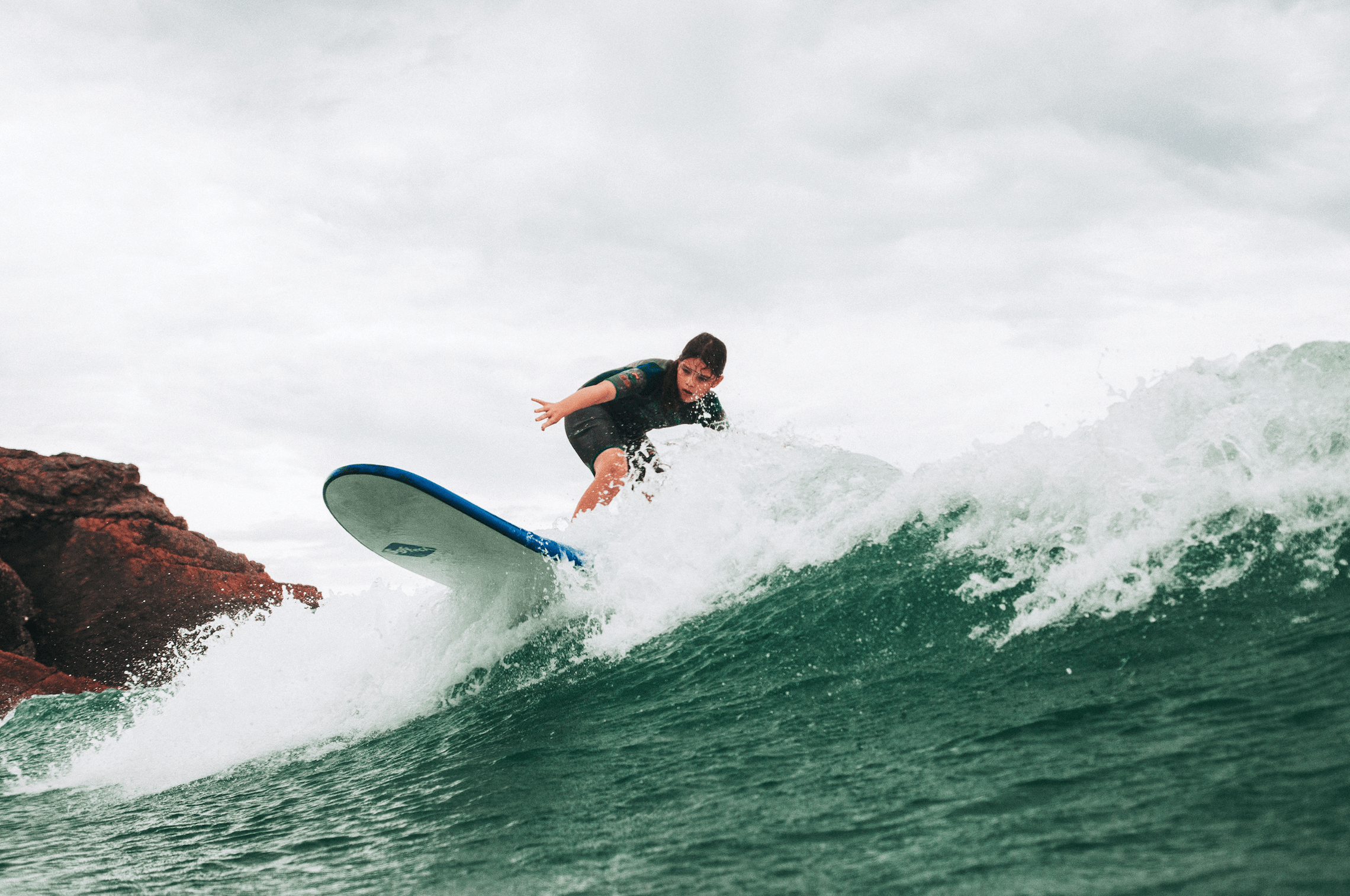WHY I HOOT
By Kirk Owers
Right before Covid-19 turned the world upside-down I was prepping my adrenal system by worrying about fire tornados, mega-droughts, and a populist assault on reality itself. Then the virus hit, work dried up and the surf became either worryingly empty or disturbingly crowded. The new normal wasn’t normal at all. Nothing was.
Simultaneously, I was discovering that I was no longer young and hadn’t been for some time. It was all going down like a bucket of cold porridge. I needed a circuit breaker.
Eventually I learned to live more in the bright actionable moment and less in the uncertain future. I had a teacher who helped open my eyes, but he wasn’t a life coach or a Dalai Lama disciple. He was a bright 11-year-old with autism who was supposed to be my surf student. Hunter wasn’t much interested in surfing until the day he suddenly was. I was on duty as a support worker that morning and it felt like good work to be involved in.
It was a warm summer’s day at a protected corner of a favourite local beach. Silky green waves spilled over an outside bank, rolled into deep water, and crunched along the shore. I was bobbing out the back pitching excited kids onto foamies while a colleague did the catching and consoling in the shorey. It brought back memories of my own boys’ thrill when they first experienced the slick glide of fibreglass propelled by moving water.
Hunter paddles out to me chatting away and I’m thinking: he doesn’t usually do this, he’s usually happier near the shore. Can he even swim? A set comes and I attempt to double-up on his longboard and we miss the wave and I get an agitated serve. Hunter not only wants to surf but wants to surf now and unassisted, thanks mister. Next wave pops up and I line him up and he’s off and up and hooting like a Lotto winner.
Hunter’s hooting when he’s on the wave, hooting when he falls off and hooting when he paddles back out. Along the way he hollers an excited commentary at members of the public. “Go lady! Woo-hoo! That’s how you do it!” No one acknowledges his comments, but he doesn’t seem to care at all. Before he catches his next wave, he announces, “Watch this everyone!” We do. He rides it to shore. Beaches it and jigs off with upraised shakas.
At first, I’m not sure what to make of all this enthusiasm. Should I explain that surfers don’t normally express emotion in the ocean, even if they’re bug-eyed with bliss? Claiming a wave – or even smiling excessively – can mark you as a learner or some kind of madman. Surfers don’t really talk that much in the line-up – and rarely to strangers. Despite a reputation for freedom and frivolity, a crowded lineup can resemble a prison exercise yard – you learn to keep your voice down and yourself to yourself. Then I realise just how stupid that would sound. “Go Hunter!” I start encouraging at high volume. “You got this!”
Of course, not all autistic kids are like Hunter or each other. Some in our Fresh Trax surf group are shy or non-verbal or appear hunched against the world. Communication is stunted and it feels impossible to glimpse their inner life. It’s easy to assume that someone who can’t talk or control their body is intellectually diminished – perhaps severely so. But this is often a mistake, according to a book I’ve been reading by Naoki Higashida, a non-verbal autistic teenager from Japan, who’s been busy setting the world straight about his condition.
The Reason I Jump is an amazing book which explains, with astonishing insight, what’s it’s like to have “severe” autism. Incredibly hard and frustrating, absolutely, but with unique insights, and in Higashida’s case, an otherworldly sensitivity and wisdom. He believes most autistic people have a special relationship with nature and a finely tuned appreciation for beauty that isn’t available to us “normals”.
“When you see an object,” he writes, “it seems that you see it as an entire thing first, and only afterwards do its details follow on. But for people with autism the details jump straight out at us first of all and then only gradually, detail by detail, does the whole image sort of float up into focus… When a colour is vivid or a shape is eye-catching, then that’s the detail that claims our attention and then out hearts kind of drown in it, and we can’t concentrate on anything else.”
You can see how the ocean with its luminous colours and spiralling, ever-moving shapes could enthrall someone with autism. But it can be much more intense than that explains, Higashida. He was 13 when he wrote the book which is filled with existential insights like this beauty: “Why do we like being in the water? We just want to go back. To the distant, distant past. To a primeval era, in fact, before human beings even existed…. Aquatic life-forms came into being and evolved, but why did they then have to emerge onto dry land, and turn into human beings who chose to be ruled by time? These are real mysteries to me.”
